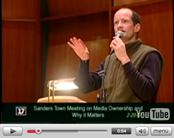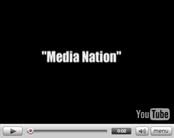Hollywood'izing "Horton Hears A Who" (FILM REVIEW)
Hollywood’izing “Horton Hears a Who”
Here’s the problem facing any Hollywood production team charged with turning a Dr. Seuss story into a full-length celluloid feature.
How do you even think of messing with what is already a great tale?
Think about it.
Theodore Geisel, the good doctor S himself, is universally recognized as one of the most gifted children’s storytellers of the 20th century (if not in all of world history). His ability to string together clever and accessible rhymes, combined with his unique and wacky illustrations, have made his beloved books a favorite of children across the world for decades.
So how do you go about improve Seuss (or even translating Seuss) for the silver screen, without falling flat on your face?
The challenge facing a Seuss-focused directorial team is the opposite of one facing, say, a J.K. Rowling “Harry Potter” directorial group. In the latter, directors have to figure out how to shoehorn the first 150 pages of a Potter novel into the first 10 minutes of the film: like director Chris Columbus working desperately to sandwich the entire story of the “Quidditch World Cup” into a lightning-quick montage (See “Goblet of Fire” on film).
With Geisel, writers and directors have to essential invent an entire other story as a cache for the Seuss-ian tale – going head to head with Dr. Seuss, in a way, while trying to be as inventive as he was.
Not an enviable task.
Those who have seen director Ron Howard’s adaptation of “How The Grinch Stole Christmas” (featuring the gifted Jim Carrey as the ghoulish green guy himself) know what I am talking about. Trying to stitch together the Seuss-ian script with some other larger story to contextualize it ain’t easy – and anyone who has made it through Howard’s “Grinch” – my kids watched it six times this past holiday before we issued a gentle but firm moratorium - know what I am talking about.
So how does “Horton” measure up?
Even with the latest and greatest in Pixar-driven animation, and the vocal work of the likes of Jim Carrey, Steve “Over the Hedge” Carell, and Carol Burnett, the problem remains glaringly apparent.
How to tell the story?
In Seuss’ tale, the story is all about Horton – that trustworthy if somewhat punchy pachadyrm whose compassion, tenacity and essential humanity (for an elephant) rise to the fore when he discovers an entire world – Whoville – existing on a small dust mote.
“A person’s a person – no matter how small.”
Remember?
“I meant what I said and I said what I meant.
An elephant is faithful, one hundred percent.”
(Which, as my good wife pointed out, is actually from “Horton Hatches An Egg.”)
But I digress.
In the movie version, all of this focus on Horton gets lost, trampled by the speed of digital animation, a script that bends over backwards to try and create a larger story where one may not exist, and a whole menagerie of other equally-as-interesting jungle animals – purple chimpanzees, an epistemologically-challenged ornery kangaroo (go Carol Burnett), and an entire cast of Whos (the Mayor, his young Goth son JoJo, and a mysterious “old man in a bathtub.”)
Will the kids like it?
The film is a visual spectacle, for sure, and the climactic scene featuring Horton versus the monkeys is a nail-biter. And the use of REO Speedwagon’s “I Can’t Fight This Feeling Anymore” as the climactic song – well, let’s just say I wasn’t expecting that twist.
And, as my daughter Anneka pointed out when asked about the meaning of the film: “The lesson I learned was that small people like JoJo could still do amazing things – he really was capable in the end.”
Can’t argue with that.
But as someone who grew up on Seuss, I’d vote for the book every time.
Come see for yourselves.



![View your cart items []](/sites/default/modules/ecommerce/cart/images/cart_empty.png)




